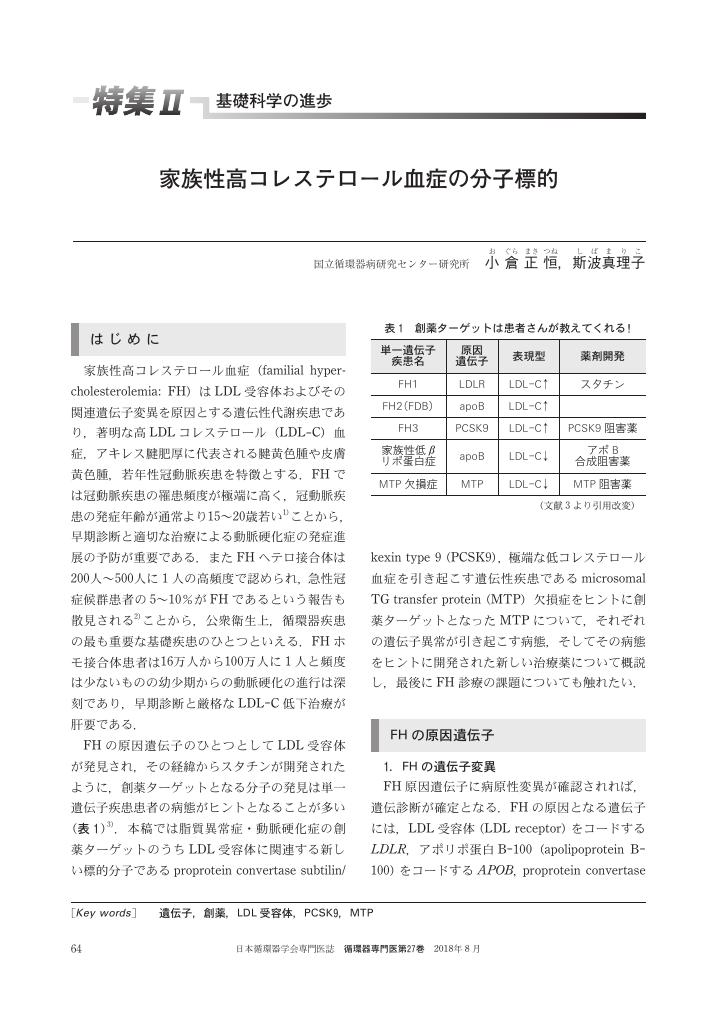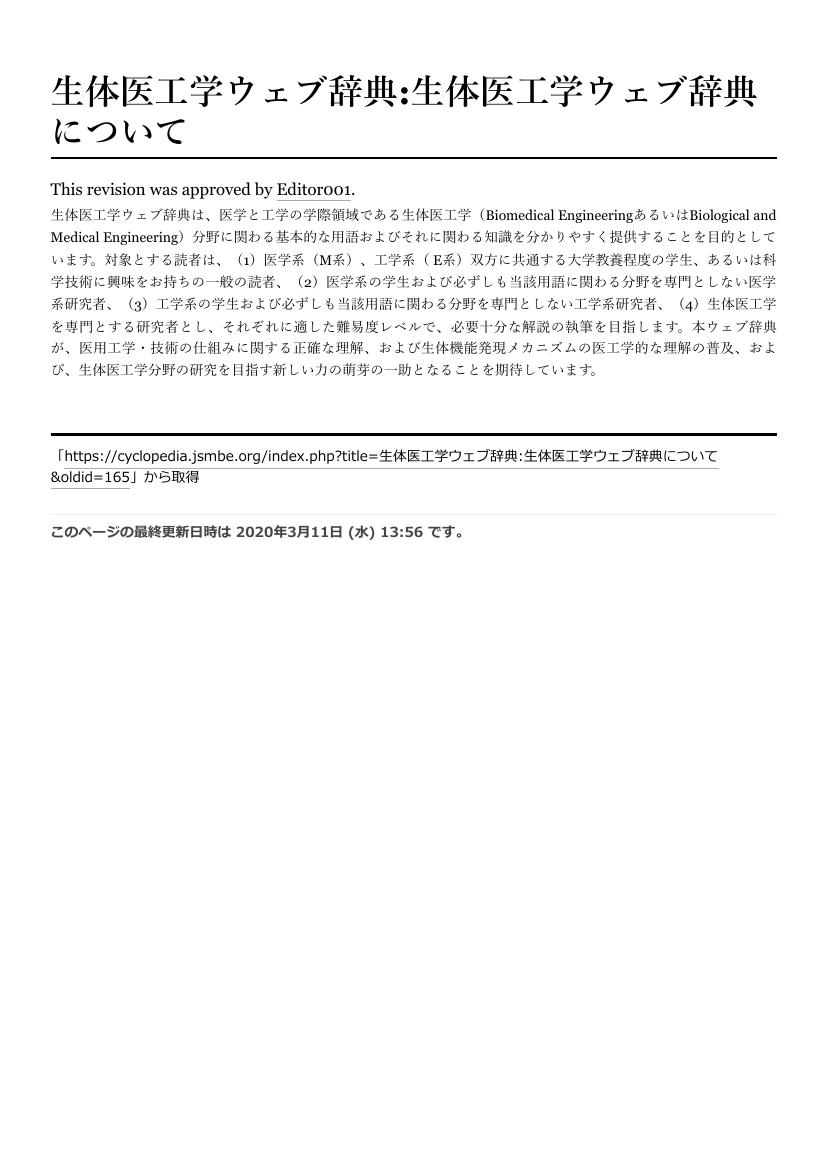2 0 0 0 OA 希少種の生息域に配慮した掘削事業における RTK-UAV を用いた掘削土砂量の推定
- 著者
- 小倉 拓郎 水野 敏明 片山 大輔 山中 大輔 佐藤 祐一
- 出版者
- 応用生態工学会
- 雑誌
- 応用生態工学 (ISSN:13443755)
- 巻号頁・発行日
- pp.22-00012, (Released:2023-09-06)
- 参考文献数
- 37
- 被引用文献数
- 1
河川管理事業において,従来の掘削事業は,定型形式で施工管理されることが慣例であったが,近年は河川環境への配慮が重視されてきたことから,中小河川であっても定型形式の技術指針と異なる掘削方法が必要とされている.そのためには,河道の三次元情報を詳細に把握し,綿密な測量計画を立案する必要がある.そこで本研究は,滋賀県を流れる A 川において,希少種に配慮した掘削事業を対象とし,RTK-UAV を用いて効率的に掘削土砂量を把握する方法について検討した.RTK-UAV を用いることで,河道掘削範囲に立ち入ることなく 10 分程度で撮影することができた.また,河道掘削事業前後の測量成果から差分解析を試みた結果,8,851.08 m3の掘削土砂量が算出された.この値は,施工者が算出した掘削土砂量である8,332 m3 に近い値を示した.RTKUAV を用いた地形測量成果から差分抽出を行う際には,写真測量が不得意としている水域,植生などの扱いに留意する必要がある.とくに,植生高は植生被覆の異なる 2 点の標高差を用いて概算で計算し,体積を計算した.総じて,RTK-UAV を用いた掘削土砂量の算出方法は,測量の設定や植生に留意することで,実務レベルで使用できることが明らかとなった.
2 0 0 0 OA 家族性高コレステロール血症の分子標的
- 著者
- 小倉 正恒 斯波 真理子
- 出版者
- 一般社団法人 日本循環器学会
- 雑誌
- 循環器専門医 (ISSN:09189599)
- 巻号頁・発行日
- vol.27, pp.64-71, 2018 (Released:2019-07-20)
- 参考文献数
- 28
2 0 0 0 OA 擦弦楽器の等価モデル表現とウルフトーン発生条件
- 著者
- 小倉 渓 水谷 孝一 若槻 尚斗
- 出版者
- 一般社団法人 日本音響学会
- 雑誌
- 日本音響学会誌 (ISSN:03694232)
- 巻号頁・発行日
- vol.77, no.11, pp.686-693, 2021-11-01 (Released:2021-12-01)
- 参考文献数
- 23
本論文では,大型擦弦楽器において特定の音高を演奏した際に生じるウルフトーンを技術的に抑圧するための指針を示すため,擦弦条件(弓の速度や圧力の組み合わせ)と発生範囲の関係を数値計算により求めることを目的とする。まず楽器の等価モデルを用いてウルフトーンを再現した後,弓の速度や圧力を網羅的に変化させウルフトーン発生状態マップを作成し,これと実験結果を比較することでモデルの妥当性を検証した。その結果,弓の速度変化によるウルフトーンの周期変化の傾向や,圧力を維持したまま弓の速度を減速することで抑圧されるといった傾向が実験結果と定性的に一致し,本モデルの妥当性が示された。
2 0 0 0 OA 蛍光検出を用いたヒト皮脂に含まれる過酸化脂質の高感度迅速フローインジェクション分析
- 著者
- 小倉 悠紀 小山 純一 福原 忠雄
- 出版者
- 公益社団法人 日本分析化学会
- 雑誌
- 分析化学 (ISSN:05251931)
- 巻号頁・発行日
- vol.61, no.5, pp.397-401, 2012-05-05 (Released:2012-06-07)
- 参考文献数
- 19
- 被引用文献数
- 1 1
肌状態と過酸化脂質との関連を調べるため,Diphenyl-1-pyrenylphosphine(DPPP)を蛍光試薬としフローインジェクション分析(FIA)システムを用いた高感度で迅速なヒト皮脂中の過酸化脂質分析法を開発した.リノール酸メチルにブラックライトを照射してリノール酸メチルヒドロペルオキシド(MLHP)を得て,固相抽出法を用いて精製した後,NMRを用いてMLHPの純度を確認し過酸化脂質標準品とした.FIA分析条件の最適化を行い,確立したシステムの検出限界は0.51 pmol,定量限界は1.1 pmolであり,分析時間は10分であった.さらに,確立した前処理法により作成したろ紙を用いてヒトの微小部分から皮脂を採取し,そのろ紙から皮脂中の過酸化脂質を抽出する方法を開発した.ろ紙を用いたときの定量限界は3.8 pmolであった.開発した方法を用いて24名のヒト皮膚上の皮脂中過酸化脂質を分析し,実際ヒトを用いた試験への適用が可能であることが確認され,個人間の差が大きいことが明らかとなった.
2 0 0 0 OA 市民社会による移住者コミュニティ受容の日韓比較:人間安全保障の観点から
- 著者
- 武者小路 公秀 宣 元錫 華 立 早尾 貴紀 小倉 利丸 羽後 静子 野田 真里 梶村 美紀 松原 弘子 鈴木 江理子 塩原 良和 金 敬黙 佐竹 眞明 近藤 敦 浜 邦彦
- 出版者
- 大阪経済法科大学
- 雑誌
- 基盤研究(B)
- 巻号頁・発行日
- 2009
本研究は、グローバル移住の女性化が進む日本と韓国両国の移住者コミュニティにおける人間の不安全状況とこれに対応する移住者自身と市民社会のサポーターの活動において、ヴェトナムとフィリッピンを送り出し国として進められた。その結果、移住女性が直面する公共圏と親密圏における諸問題の性格、特に、移住先と故郷との双方を生活圏とする新しい公共、新しい市民像の形成を目指す移住市民との協力活動の重要性が確認された。
2 0 0 0 OA 戦後の沖縄における沖縄住宅公社による米軍住宅建設プロセスと計画管理技術に関する研究
- 著者
- 中島 親寛 池田 孝之 小倉 暢之
- 出版者
- 日本建築学会
- 雑誌
- 日本建築学会計画系論文集 (ISSN:13404210)
- 巻号頁・発行日
- vol.68, no.566, pp.105-111, 2003-04-30 (Released:2017-02-09)
- 被引用文献数
- 2 2
The purpose of this paper is to make clear the following : (1) the Okinawa Housing Corporation was organized and this organization had the characteristic of housing project. (2) the Okinawa Housing Corporation had the characteristic technique and details of the planning management technology. (3) It is defined that the Okinawa Housing Corporation carried out a housing policy in postwar Okinawa The results are as follows : (1) The Okinawa housing corporation was an organization, which was able to do everything from construction to housing management in the background of legislation. (2) The main planning management technology had been carried out by established specifications. (3)The method of a continuous housing supply was carried out in the background of legislation, organization, and planning management technology.
2 0 0 0 OA 「ぼろんじ」 ( 『ねむり姫』所収 ) を読む : <超越>に向かう旅
- 著者
- 小倉 斉
- 出版者
- 愛知淑徳大学文学部
- 雑誌
- 愛知淑徳大学論集. 文学部・文学研究科篇 (ISSN:03862712)
- 巻号頁・発行日
- no.30, pp.11-21, 2005-03-15
Pages also numbered 84-74
2 0 0 0 OA 龍膽寺雄の挑戦 : 「放浪時代」を中心に
- 著者
- 小倉 斉
- 出版者
- 愛知淑徳大学大学院文化創造研究科
- 雑誌
- 愛知淑徳大学大学院文化創造研究科紀要 (ISSN:21884633)
- 巻号頁・発行日
- no.8, pp.1-24, 2021-03-25
Pages also numbered 84-61
2 0 0 0 OA タンパク質ジスルフィド結合形成異常と疾患発症・進展との関連
- 著者
- 小倉 次郎
- 出版者
- 公益社団法人 日本薬学会
- 雑誌
- YAKUGAKU ZASSHI (ISSN:00316903)
- 巻号頁・発行日
- vol.142, no.10, pp.1055-1060, 2022-10-01 (Released:2022-10-01)
- 参考文献数
- 48
As intermolecular and intramolecular disulfide bridges in proteins play a vital role in the stability of the final protein structure, the disruption of disulfide bridges in proteins may lead to disease development and progression. Therefore, understanding the association of abnormal protein disulfide bond formation with disease development and progression can be useful for developing novel drugs for various diseases. Considering that disulfide-linked protein folding involves redox reactions in the endoplasmic reticulum, this process may be affected by oxidative stress. We hypothesized that oxidative stress-related diseases may be induced by abnormal protein disulfide bond formation. This review introduces the association of abnormal protein disulfide bond formation with disease development and progression.
2 0 0 0 OA 自己の喪失としての労働 : 剰余労働=搾取論を超えて(<特集>労働論の現代的位相)
- 著者
- 小倉 利丸
- 出版者
- 経済理論学会
- 雑誌
- 季刊経済理論 (ISSN:18825184)
- 巻号頁・発行日
- vol.47, no.3, pp.22-35, 2010-10-20 (Released:2017-04-25)
Ogura proposes the theoretical extension of Marx's theory of exploitation on surplus labor which covers the whole of activities as not only labor but also whole of human life. In the definition of labor by Marx's theory of labor process in the Capital, characteristics of labor is substance metabolism between human and nature based on indivisibility between desire and activity, and also between conception and activity. In capitalist labor process, however, labor depends on capitalist cause to valorization independently of worker's desire and conception. Possibility of such capitalist labor needs to construct not only cause of money but also non-economic meanings on concrete labor. In this point of view, Marx's concept of labor as universal characteristics of human activity is invalid, rather activity called "labor" is historically specific category of human activity in capitalist society. Ogura's alternative view point of labor as history-binded category of human activity makes clear another uncovered view point of labor by Marx's texts from early years to late years. Paying attention to the alternative view point of labor based on Marx, Ogura tries to extend the theory of exploitation. Labor without desire and conception put void of self, which does not mean so called alienation. A structure of meaning of labor in capitalism intends to satisfy a sense of void, which brings happiness and self realization suitable for capitalist human relations. This kind of compensation mechanism does not always good, rather it has to have fundamental contradiction of causes between human being and capital. Ogura suggests a future society after capitalism has to accomplish emancipation of human being from making the worker which dominate a center of the most significant meanings as human beings.
2 0 0 0 OA 傾斜磁場変動 : dB/dtと神経刺激
- 著者
- 小倉 明夫
- 出版者
- 公益社団法人 日本放射線技術学会
- 雑誌
- 放射線撮影分科会誌 (ISSN:1345322X)
- 巻号頁・発行日
- vol.32, pp.35-37, 1999-04-05 (Released:2017-12-28)
- 著者
- 須長 史生 小倉 浩 堀川 浩之 倉田 知光 正木 啓子
- 出版者
- 昭和大学学士会
- 雑誌
- 昭和学士会雑誌 (ISSN:2187719X)
- 巻号頁・発行日
- vol.77, no.5, pp.530-545, 2018-10-20 (Released:2018-03-13)
- 参考文献数
- 9
- 被引用文献数
- 1
本研究の目的は18歳から20代前半の男女の,セクシュアル・マイノリティに対する意識や態度を明らかにすることである.目的を達成するために,首都圏の医療系のA大学の一年生439名(男性137名,女性300名,その他2名)に対してアンケート調査を行った.本調査はその性質上,プライバシーの確保と回収率の向上が課題となる.そこで,今回はその双方への効果を期待して,手段としてインターネットを活用することとした.学生はスマートフォンもしくはタブレット端末を用いてアンケートに回答した(回収率76.9%).質問紙の作成およびデータの分析では先行研究として釜野さおりらが行った「性的マイノリティについての全国調査(2016年)」の報告会資料を参考にし,その比較において若者,特に今回は18歳から20代前半まで大学生の,性的少数者に対する意識や行動の実情の把握を試みた.調査の結果,調査対象者の持つセクシュアル・マイノリティに関する客観的知識は「全国調査」が明らかにした一般的な傾向に比べてより正確であることが分かった.また,セクシュアル・マイノリティに対する意識や態度も差別的な内容を含む項目では,より抑制しようとする傾向を示した.これらのことは本調査の対象者が「全国調査」に比べて高学歴かつ医療系という独自性を有していることが関係している可能性がある.それゆえこの結果は社会の全体像をそのまま映し出したものとは言えないが,医療に関する知識がより広範に普及するであろう将来の社会像の一端を予見させるものとしての価値は有しているといえよう.なお,本研究は3か年に渡って毎年同大学の1年生に対する調査が予定されており,その1年目の中間報告に位置づけられる.
2 0 0 0 OA 沖縄戦後復興における規格住宅の計画と供給について
- 著者
- 金城 春野 小倉 暢之
- 出版者
- 日本建築学会
- 雑誌
- 日本建築学会計画系論文集 (ISSN:13404210)
- 巻号頁・発行日
- vol.83, no.744, pp.307-314, 2018 (Released:2018-02-28)
- 参考文献数
- 28
- 被引用文献数
- 3 2
More than 75,000 emergency houses, called the standard prefabricated house, were built in Okinawa after the war in approximately four years, beginning in 1946, which made a great contribution to reconstruction. The standard prefabricated house was designed by a local architect named Hisao Nakaza (1904-1962) at the U.S. naval military government Okinawa public works department on Nov. 30, 1945. The purpose of this study is to clarify the details of the situation about the process, the design and the supply system of the standard prefabricated house, and to also clarify the actual factor of the massive and quick supply. This paper consists of five chapters. Chapter 1 describes the background based on the career and articles of Nakaza and why he began to design the standard house. According to his career, he had experience with evacuation house construction in wartime. After the experience was evaluated, Nakaza designed the standard house at the U. S. naval military government Okinawa public works department. Chapter 2 considers the standard house plan situation of the U.S. naval government from directions. The naval government gave orders that let local people resettle from camps to their original places of residence on October 23, 1945. Therefore, the government had to supply houses. The direction of October 31, 1945 shows the design guide of the houses. It is thought that the scale and materials of the standard prefabricated house were decided based on this. Chapter 3 analyzes the design drawing. The standard prefabricated house responded to the situation of a lack of engineers in that the frames of the walls and roof trusses were designed as prefabs which were produced at a factory. Furthermore, the design can respond to the lack of material flexibly, and the choice of finishing materials depending on the local situation is possible. Chapter 4 investigates Nakaza's article and the Okinawa public works department relations documents, and understands the supply system. For approximately four months, from January to May in 1946, the constructions were instructed by three people, including Nakaza. From the period of May, 1946 to the end of 1949, constructions were carried out by an organized system by the public works department of Okinawa civil administration. The department was able to settle the U.S. government budget directly. Architectural division managed the material yards and carried out construction by construction units. In addition, motor pools of the land transport division took transports. Chapter 5 analyzes the monthly construction number on the activity reports of the U.S. military government and assumes the construction end time. Construction was carried out most actively during the periods from the beginning of 1946 to mid 1947. The first action system was good; more than 4,000 houses a month in December, 1946 and January, 1947 were built. There are construction reports until October, 1949, which show that the houses were built until about the end of 1949. A total of about 76,815 houses were supplied within four years, from January, 1946 to October, 1949. As above, the standard prefabricated house was designed by architect Hisao Nakaza, and supervised by the U.S. military government, and managed by local government, and constructed by mutual support among residents. The main reasons to be able to serve a large quantity and quick supply are as follows. (1) The houses were a prefabricated type which the residents could easily build. (2) The design could respond to the lack of material flexibly, and the choice of finishing materials depending on the local situation was possible. (3) The compact organization system could perform the stocking, manufacturing, sending, and budgeting execution of the construction.
2 0 0 0 OA 卵巣除去鶩に對する睾丸移植が生殖隆起の痕跡に及ぼす影響(豫報)
- 著者
- 小倉 正男
- 出版者
- 公益社団法人 日本畜産学会
- 雑誌
- 日本畜産学会報 (ISSN:1346907X)
- 巻号頁・発行日
- vol.9, pp.200-207, 1936 (Released:2008-03-10)
- 参考文献数
- 5
2 0 0 0 OA セル・アニメーションにおける多層化の起源としてのムーヴィング・パノラマ
- 著者
- 小倉 健太郎
- 出版者
- 日本映像学会
- 雑誌
- 映像学 (ISSN:02860279)
- 巻号頁・発行日
- vol.108, pp.34-56, 2022-08-25 (Released:2022-09-25)
- 参考文献数
- 47
1910年代に伝説的なアニメーターであるノーラン(Bill Nolan)によって発明されたスライド技法は、撮影台の上で背景画を引っ張ることでキャラクターや視点の移動を表現する技法である。この技法は19世紀初頭に誕生したムーヴィング・パノラマと明らかに類似している。ムーヴィング・パノラマは長尺の絵画を機械によって巻き取りながら眺める装置であり、スライド技法が誕生した1910年代には舞台や映画の背景としても用いられていた。1910年代にノーランはニューヨークで働いており、それらのムーヴィング・パノラマが身近にあった。さらに彼が発明したスライド技法自体もまた、当時の米国で一般的にムーヴィング・パノラマを指した「パノラマ」という語で呼ばれていた。そうした状況から鑑みて、ムーヴィング・パノラマはスライド技法の着想源の一つになった可能性が高い。スライド技法を用いたセル・アニメーションではレイヤーが多層化し運動視差を再現しようとする傾向が見られるが、こうした傾向は舞台装置や万国博覧会の展示に用いられたムーヴィング・パノラマにも共通して見られる。レイヤーをスライドさせるというムーヴィング・パノラマの構造の内に、多層化していく契機が含まれているのだ。
2 0 0 0 ゆれる死刑 : アメリカと日本
2 0 0 0 IR 大阪教育大学51cm望遠鏡における分光観測システムの構築
- 著者
- 小倉 和幸 新井 彰 定金 晃三 松本 桂
- 出版者
- 大阪教育大学
- 雑誌
- 大阪教育大学紀要. 第3部門, 自然科学・応用科学 (ISSN:13457209)
- 巻号頁・発行日
- vol.63, no.1, pp.75-89, 2014-09
我々は大阪教育大学天文台51cm反射望遠鏡(以下51cm望遠鏡)における分光観測システムを構築した。これまで51cm望遠鏡を利用した撮像・測光観測によって様々な成果を挙げてきた。51cm望遠鏡での撮像・測光観測に加え分光観測が可能になればさらに学生の研究テーマが広がるとともに,設置から20年が経過する51cm望遠鏡の利用価値を大幅に高めることにつながる。そこで我々は小型望遠鏡での使用を想定して開発されたLHIRES IIIを用いて分光観測システムの構築に向けて機材の調節と試験観測を行った。その結果,明るい天体についてのスペクトルを得ることができた。本稿ではオリオン座δ星といっかくじゅう座V959 (2012年いっかくじゅう座新星)のスペクトルを用いて分光観測システムの性能を概算した。その結果,連星系のスペクトル変化や,明るい新星のスペクトルを観測可能であることが示せた。いくつかの課題点は残るが51cm望遠鏡による分光観測の基礎が構築できた。We developed a spectroscopic observation system of the 51cm telescope as an additional means of astronomical observation at Osaka Kyoiku University. While the 51cm telescope has been used for photometric observations and yield many scientific results, we can naturally expect that spectroscopic observation should bring more valuable information on astrophysics for us. We use LHIRES III sectrograph to construct the system of spectroscopy, and obtained optical spectra of some bright astronomical objects. We evaluated the performance of the system, especially by using the spectra of δ Ori and V959 Mon (Nova Mon 2012). Those tests indicated that we were able to obtain essecial informations required for astrophysical researchs of binary systems and classical novae, and the system is a promising tool for spectroscopic investigations of relatively bright objects by the 51cm telescope.
- 著者
- 小倉 慶郎
- 出版者
- 大阪府立大学総合教育研究機構
- 雑誌
- 言語と文化 (ISSN:13478966)
- 巻号頁・発行日
- vol.7, pp.51-70, 2008-03-31
This paper aims to present the law of translation that governs the manner in which literal/free translation takes place. Since ancient times, the issue of whether translation should be source- or target-oriented has been furiously debated. Although one camp has always been lambasting the other for its strategy, the reasons for a translator's use of both methods were never clear. First, we examine the examples of translation in different genres and attempt to discover the rules that made the translator adopt one particular strategy. Next, we propose the law of translation with regard to "foreignizing/domesticating" strategies, which has thus far never been identified. Finally, we seek to check the validity of this law, citing a short history of translation in varied cultures.
2 0 0 0 OA セルロースナノファイバーの生態毒性試験手法の現状と留意点
- 著者
- 田井 梨絵 小倉 勇 眞野 浩行
- 出版者
- 日本環境毒性学会
- 雑誌
- 環境毒性学会誌 (ISSN:13440667)
- 巻号頁・発行日
- vol.25, pp.32-47, 2022-06-07 (Released:2022-06-07)
- 参考文献数
- 51
To develop ecotoxicity test methods for the ecological impact assessment of cellulose nanofibers (CNFs) in aquatic environments, we summarized the methods and results of ecotoxicity tests used in published articles. We also discussed the points to be considered while conducting ecotoxicity tests for CNFs using aquatic organisms based on the Organisation for Economic Co-operation and Development (OECD) guidance document No. 317 for ecotoxicity testing of nanomaterials. In some published articles, no ecological effects of CNFs on aquatic organisms were observed, even when they were exposed to high concentrations of CNFs. In these studies, test organisms may not have been exposed to nominal concentrations of CNFs because of CNF agglomeration and settling caused due to the low dispersion stability of CNFs resulting from the water quality of the test medium. According to the OECD guidance document, attention must be paid toward dispersibility and dispersion stability, effects of feeding, and factors related to adverse effects, analysis, and measurement of CNFs. No literature was found that reported on all these aspects of testing. Future examination of ecological effects of CNFs needs to consider measuring actual exposure concentrations by evaluating dispersibility and dispersion stability of CNFs.
2 0 0 0 OA 生体医工学ウェブ辞典(第一分冊)
- 著者
- 相川 慎也 芦原 貴司 天野 晃 有末 伊織 安藤 譲二 伊井 仁志 出江 紳一 伊東 保志 稲田 慎 井上 雅仁 今井 健 岩下 篤司 上村 和紀 内野 詠一郎 宇野 友貴 江村 拓人 大内田 研宙 大城 理 太田 淳 太田 岳 大谷 智仁 大家 渓 岡 崇史 岡崎 哲三 岡本 和也 岡山 慶太 小倉 正恒 小山 大介 海住 太郎 片山 統裕 勝田 稔三 加藤 雄樹 加納 慎一郎 鎌倉 令 亀田 成司 河添 悦昌 河野 喬仁 紀ノ定 保臣 木村 映善 木村 真之 粂 直人 藏富 壮留 黒田 知宏 小島 諒介 小西 有人 此内 緑 小林 哲生 坂田 泰史 朔 啓太 篠原 一彦 白記 達也 代田 悠一郎 杉山 治 鈴木 隆文 鈴木 英夫 外海 洋平 高橋 宏和 田代 洋行 田村 寛 寺澤 靖雄 飛松 省三 戸伏 倫之 中沢 一雄 中村 大輔 西川 拓也 西本 伸志 野村 泰伸 羽山 陽介 原口 亮 日比野 浩 平木 秀輔 平野 諒司 深山 理 稲岡 秀検 堀江 亮太 松村 泰志 松本 繁巳 溝手 勇 向井 正和 牟田口 淳 門司 恵介 百瀬 桂子 八木 哲也 柳原 一照 山口 陽平 山田 直生 山本 希美子 湯本 真人 横田 慎一郎 吉原 博幸 江藤 正俊 大城 理 岡山 慶太 川田 徹 紀ノ岡 正博 黒田 知宏 坂田 泰史 杉町 勝 中沢 一雄 中島 一樹 成瀬 恵治 橋爪 誠 原口 亮 平田 雅之 福岡 豊 不二門 尚 村田 正治 守本 祐司 横澤 宏一 吉田 正樹 和田 成生
- 出版者
- 公益社団法人 日本生体医工学会
- 雑誌
- 生体医工学 (ISSN:1347443X)
- 巻号頁・発行日
- vol.Dictionary.1, pp.1-603, 2022 (Released:2022-03-31)




